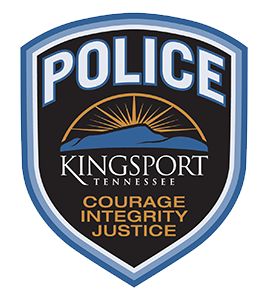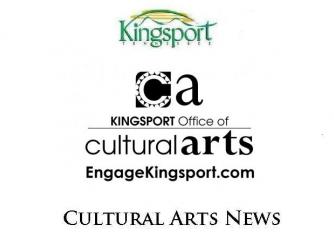

This content has restricted access, please type the password below and get access.
This content has restricted access, please type the password below and get access.
This content has restricted access, please type the password below and get access.
This content has restricted access, please type the password below and get access.
This content has restricted access, please type the password below and get access.
This content has restricted access, please type the password below and get access.

KINGSPORT – As of Monday morning, August 3, 2015, Kingsport City Schools will be back in session.‚ The Kingsport Police Department will be patrolling Kingsports various school zones and actively enforcing traffic violations.‚ Motorists are urged to slow down and drive with an increased level of situational awareness, especially around school zones.‚ Following, are some Back to School Safe Driving Tips from our friends at the National Safety Council:
Slow Down: Back to School Means Sharing the Road
Things get a little crazy on the roads during the school year.‚ Buses are everywhere, kids on bikes are hurrying to get to school before the bell rings, and anxious parents are trying to drop their kids off before work.‚ It’s never more important for drivers to slow down and pay attention than when kids are present ‚¬ especially before and after school.
If You’re Dropping Off
Schools often have very specific drop-off procedures for the school year. ‚ Make sure you know them for the safety of all kids. ‚ According to the National Safe Routes to School program, more children are hit by cars near schools than at any other location. ‚ The following‚ apply to all school zones:
Sharing the Road with Young Pedestrians
According to research by the National Safety Council, most of the children who lose their lives in bus-related incidents are 4 to 7 years old, and they’re walking. ‚ They are hit by the bus, or by a motorist illegally passing a stopped bus. ‚ A few‚ precautions go a long way toward keeping children safe:
Sharing the Road with School Buses
If you’re driving behind a bus, allow a greater following distance than if you were driving behind a car. ‚ It will give you more time to stop once the yellow lights start flashing. ‚ It is illegal in all 50 states to pass a school bus that is stopped to load or unload children.
Sharing the Road with Bicyclists
On most roads, bicyclists have the same rights and responsibilities as vehicles, but‚ bikes can be hard to see. ‚ Children riding bikes create special problems for drivers because usually they are not able to properly determine traffic conditions.‚ The most common cause of collision is a driver turning left in front of a bicyclist.
By exercising‚ a little extra care and caution, motorists, bicyclists, pedestrians, and school buses can co-exist safely in school zones and throughout the City of Kingsport.

KINGSPORT – Back-to-school season is in full effect next week. Remember to safely share the roads with school buses, pedestrians and bicyclists, and provide children with the necessary knowledge to stay safe at school. The following links and tips can help to get your school year of to a safe start!
Safe Roads for Safe Kids
Whether children walk, ride their bicycle or take the bus to school, it is extremely important that they – and the motorists around them – take proper safety precautions‚¬â€¹.
For Children in the Car:
• Always wear your seat belt–both lap and shoulder belts–and buckle up as soon as you get into the car. A lap belt should cross the hip bones and the shoulder belt cross the center of the collar bone.
• Never share a seat belt.
• Dont yell or jump around. It can distract the driver.
For Parents:
• Children 12 years old and younger should always ride in the back seat. They should never sit in the front seat of a car that has air bags.
• Infants should be placed in a rear-facing car seat to at least age one and up to 20 lbs.
• Toddlers should be placed in a forward-facing car seat until the harness no longer fits. Children can move to a booster seat at 4 years old.
• Use a booster seat with the lap and shoulder seat belts until your child reaches the 4 9 (57) or 9 years old.
Send Kids Off Safely
‚¬â€¹Injuries are common at school‚¬â€but many can be prevented. Before you send your children off, be sure to run through these safety topics.
• Backpack Safety
• Playground Safety
Protect New Teen Drivers
Teen crashes spike in the months as they head back to school and happen more often during hours when school begins and lets out. Learn the best ways to keep your teen drivers safe.
Back To School Safety Tips Sheets
Pedestrian Safety‚¬â€¹
Safe Riding in a Car
Distracted Walking
16 Tips for a Safer Bus Ride
First-Time Rider School Bus Tips‚¬â€¹‚¬â€¹
Coloring Fun Book
Back to School Video PSAs
Back to School: Driving Safely with School Buses
Stop Bullying: What Parents Can Do
Source:National Safety Council www.nsc.org

KINGSPORT – The National Assembly of State Arts Agencies (NASAA) is hosting a webinar ‚¬ Engaging Millennials: Creating Young Arts Advocates ‚¬ on August 19, 2015, to provide an overview of millennial participation trends, and discuss strategies and programs that have successfully resulted in the inspiration and empowerment of this generation.
The Tennessee Arts Commission invites you to join the conversation from 3-4 PM (EST) for the seminar. Acting as partner participants in Tennessee are ArtsMemphis, ArtsBuild in Chattanooga and the Kingsport Office of Cultural Arts. The Kingsport Office of Cultural Arts will be hosting the seminar in Kingsport.‚ It will be located in the Domtar Community Room at the Kingsport Chamber of Commerce, 400 Clinchfield Street, Kingsport, TN 37660.
Please RSVP to the Office of Cultural Arts at (423) 392-8414 or macdonald@kingsporttn.gov
The webinar will discuss engaging the largest generation since the baby boomers in the arts. Millennials, now young adults ages 18-35, are‚ important to have as arts participants and advocates as they are fully involved in todays technological revolution and are tomorrows emerging leaders. Presenters will include John Schratwieser, Executive Director of Maryland Citizens for the Arts; Tracie Konopinski, Senior Campaign Organizer of MASSCreative; and W. Omari Rush, Curator or Public Programs of Ann Arbor Art Center and Council Member of the Michigan Council for Arts and Cultural Affairs.
The webinar will be available at‚ four locations (one being Kingsport) in Tennessee. After the webinar, Tennessee Arts Commission will publish a report on the webinar.
In addition to viewing the webinar, the group locations will provide an excellent opportunity to network with colleagues. We also encourage a digital conversation using social media to continue the discussion. Expand your experience by posting on Facebook and Twitter; tag your locations account‚ and use #cultivateTN on your posts.
Follow the link below for more information:
This content has restricted access, please type the password below and get access.


Click Here for the Lead Line Survey
All Kingsport water customers need to complete the survey
Paying your utility, miscellaneous receivables bill or building permits payment has never been easier! Click the link below to be directed to Click2Gov, the online payment system that allows users to view their account and pay with a credit or debit card through the secure website.
Pay your red light citation bill online by clicking the button below. You will be redirected to the payment page.
Pay Water (Utility) Bill
Pay Red Light Citation
Pay Other Receivables
Online Tax Payments
Building Permit Payments
To report a non-emergency, please use the new ConnectKingsport app.
You can also use the app to find information about the City of Kingsport with links to the city website, animal services, ongoing events and more. Download the free app today to be a part of making Kingsport a great place to live, work and play!
To download the free app, please search for it on the Apple App Store or on Google Play. You can also use the online portal below.
Please note that the use of ConnectKingsport is intended for the reporting of non-emergency issues only. If you need immediate Police or Fire response, please call 911.
Download on the Apple App Store
Download on the Google Play Store
Online Portal
